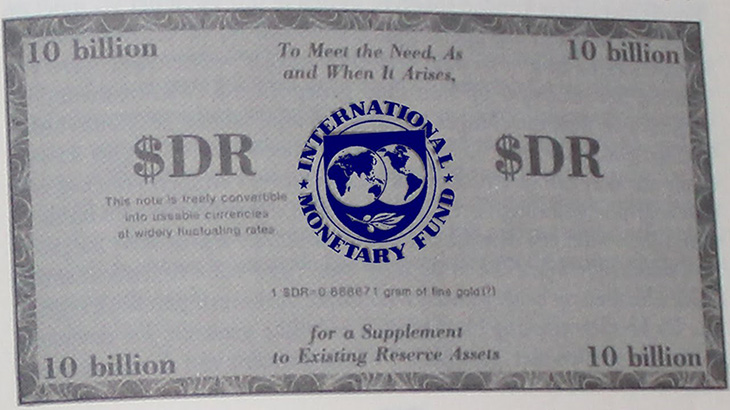SDR Basket Weightings: Setting the formula is political; using the formula is maths
Commentary by Kathleen Tyson - September 10, 2021

One of the things that drew fire in my recent OMFIF commentary was the observation that China's renminbi could gain primacy of weighting in the IMF's SDR basket despite joining the basket as recently as 2016 and being used for just 1.4 percent of global payments. I reworded it while the article was down to soften the statement as 'someday', and editors then softened it even more.
The pushback surprised me because I didn't set the SDR formula; I just did the maths. The new formula was adopted in 2015 by the Executive Board of the IMF, having been promoted by staff as better than the old much simpler 62/38 exports-reserves formula. On that formula the renminbi would have got primacy of weighting when it entered the basket as China had already passed the US in both exports and reserves. UPDATE: China had not passed the US in SHARE of global official reserves, which is what the IMF used as its measure, not holdings of official reserves, where China did already lead.
Two alternative formulas were put forward, and the staff and Executive Board chose formula 2010B.
Exports are 50 percent of the 2010B weighting. Here China has a clear lead over USA, more than 14.7 percent of global exports in 2020 to the USA's 8.1 percent (a gain from 2015 when China had 13.6 to USA's 9.1).
The remaining 50 percent weighting in 2010B is equally divided: (a) share of holdings of official reserves, (b) foreign exchange turnover, and (c) the sum of International Banking Liabilities and International Debt Securities.
In official reserves, Peoples Bank of China leads with USD 3.371 trillion in July 2021 official reserves (#1 ranking) to the Federal Reserve's USD 140.185 billion (#21 ranking), so almost 25 times more official reserves. UPDATE: The IMF formula looks at total global holdings of a currency in reserves, not the national official reserves. On that basis, using June 2021 COFER data, RMB is still far behind the USD at 2.45 percent of global reserves against 59.5 percent for USD (the lowest proportion ever reported, however).
The US still leads strongly in FX turnover, as renminbi has only recently globalised as a traded FX currency. While growing strongly, it is still only 4.3 percent of the global total. USD is more than 80 percent.
Now the IMF staff didn't say where they were getting their liabilities and securities data, but I looked for some at the BIS data warehouse.
There wasn't an entry for China in the Table B3-S Consolidated Banking Statistics data for foreign claims and other exposures. Let's just assume the US dollar is still much bigger.
Looking at International Debt Securities (Table C3 - International Debt Securities, Amount Outstanding), we find US banks and others have USD 2.395 trillion as of Q1 2021. China's banks and others have 213.4 billions. So here the US is still more than 10 times bigger.
My impression was that just on exports (50 percent) and official reserves, China has gained weight in the SDR basket under the 2010B formula, and if that is used again to reset the basket weightings - delayed last year - renminbi should be gaining weight as an SDR component currency. The decision on new SDR component weightings is expected this month to be effective July 2022.
Can they change the formula again to preserve USD primacy? Sure. Which formula they use is a political decision for the IMF Executive Board.
But using the 2010B formula adopted in 2015, even without taking account of the massive growth in Chinese banking sector and global loans under the Belt & Road Initiative, China's currency should be moving up the weightings.
The IMF can do the politics. I can do the maths.
(Although it helps when I get the right data point. Apologies for any confusion about the reserves.)